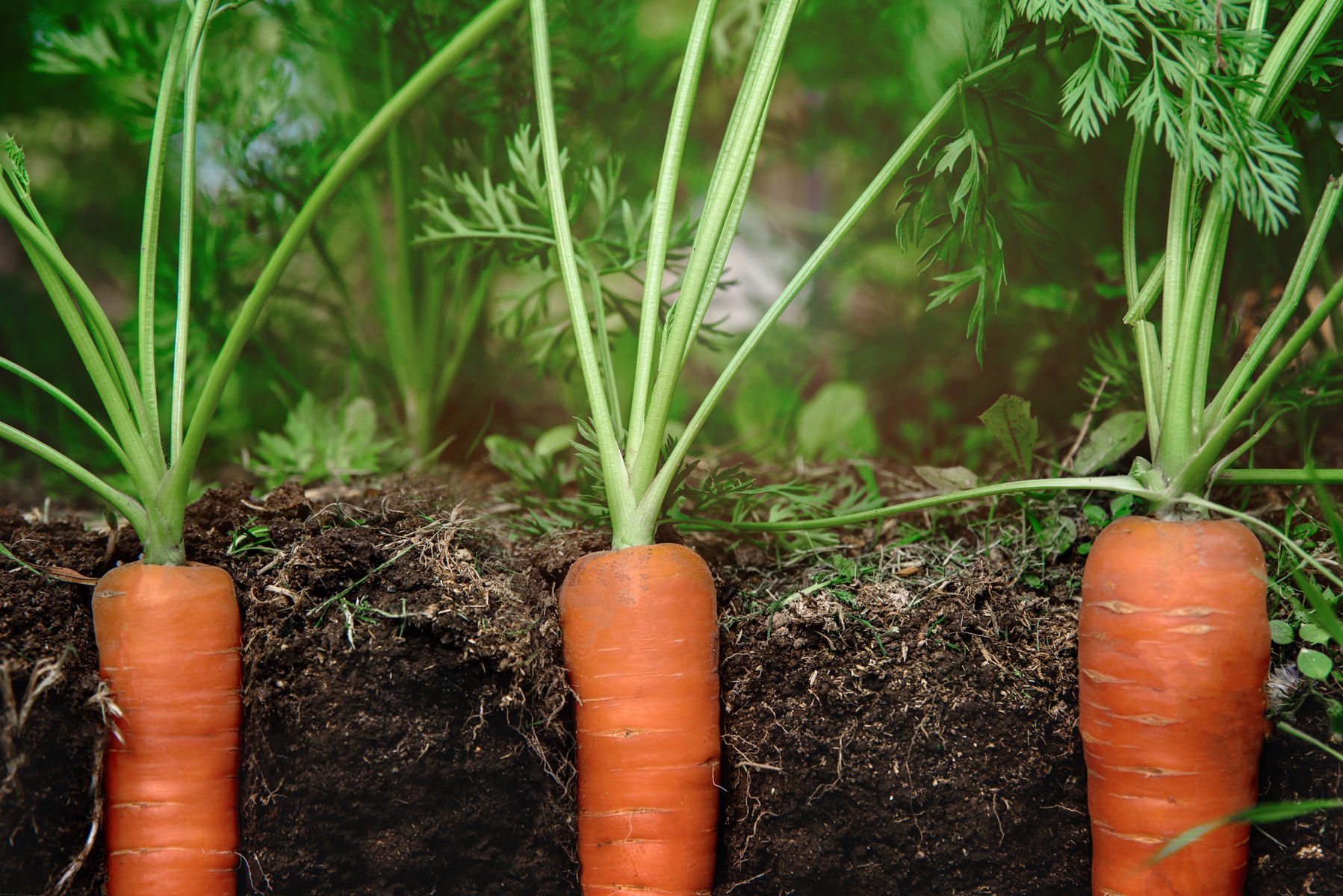
Carrot
Daucus carota subsp. sativus
Basic Information
🌿 Family: Apiaceae🗺️ Zone: 3-10
Other Names:
- Wild Carrot (Daucus carota)
- Queen Anne's Lace (wild ancestor)
🌡️ Ideal Temperature : 45°F – 75°F
🔥 Heat Tolerance: Up to 95°F
❄️ Cold Tolerance: Down to 20°F
🌱 Type: Annual
Layers
- Root
Functions
- Edible
- Medicinal
- Pollinator
- Wildlife Attractor
- Dynamic Accumulator
- Border Plant
Pests
Description
Carrot (Daucus carota subsp. sativus) is a biennial root vegetable grown for its edible taproot. It develops long, cylindrical roots in shades of orange, purple, red, yellow, and white, depending on the variety. The plant has feathery green foliage and produces clusters of small white flowers in its second year if not harvested.
Carrots prefer loose, sandy, or loamy soil free of rocks to encourage straight root development. They are a cool-season crop that grows best in mild temperatures and requires consistent moisture for optimal growth.
🌞💧 Sun and Water Requirements:
- Prefers full sun but tolerates partial shade.
- Requires well-drained, loose, sandy or loamy soil.
- Needs consistent watering to prevent cracking and encourage even growth.
✂️🫘 Methods to Propagate:
- Seeds: Direct sow outdoors 2–4 weeks before the last frost in spring.
- Succession Planting: Sow every 2–3 weeks for a continuous harvest.
- Regrowing: Carrot tops can regrow greens in water but will not produce a new root.
🧑🌾👩🌾 When to Harvest:
- Roots are ready for harvest 60–80 days after planting.
- Harvest when roots reach the desired size, typically 15–20 cm (6–8 inches) in length.
- Leave some plants in the ground to overwinter for seed production the following year.
Purpose
Carrots serve multiple functions in a permaculture system:
- Edible: Roots are consumed raw, cooked, or juiced; greens are edible but slightly bitter.
- Medicinal: Rich in beta-carotene, supports eye health, digestion, and immunity.
- Pollinator: Flowers attract beneficial insects, including bees and butterflies.
- Wildlife Attractor: Provides food and habitat for pollinators and beneficial insects.
- Dynamic Accumulator: Draws up potassium and phosphorus, improving soil health.
- Border Plant: Works well in vegetable gardens and companion planting systems.